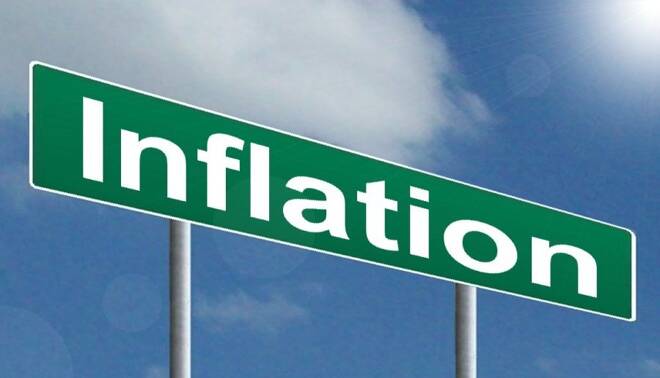Advertisement
Advertisement
Disappointing U.S. Inflation, Retail Sales Data Means Mr. Trump May Get His Wish
By:
On April 3, the newly released minutes from the Federal Open Market Committee meeting on March 15 indicated that the central bank struggled with two major
On April 3, the newly released minutes from the Federal Open Market Committee meeting on March 15 indicated that the central bank struggled with two major concerns: whether it should let inflation run hot beyond its 2.0% mandate and how to prepare for President Trump’s economic stimulus plans.
The minutes showed near-unanimous support from a 25 basis point rate hike, but there was plenty of discussion and a divided committee on issues of inflation and Trump’s ambitious economic plans.
At the conclusion of the meeting, Fed officials decided to keep signaling that future rate increases would be gradual but be prepared to respond quickly to changes in the economic outlook.
As far as inflation was concerned, the minutes showed that some Fed officials worried that if unemployment, at the time of the meeting about 4.7%, fell further, it could pose a “significant upside risk” of higher inflation. Inflation, on the other hand, has remained below the Fed’s 2% inflation goal for several years.
Although some Fed officials argued that the inflation target might be achieved by the end of this year, other Fed officials argued that because inflation had run below 2% for so long, it would do no harm to allow prices to rise above 2% for a time.
“A few members expressed the view that the committee should avoid policy actions or communications that might be interpreted as suggesting the committee’s 2% inflation objective was actually a ceiling,” the minutes said.
The Fed continued to signal that it expected to boost rates three times this year, and many economists believe that the upcoming rate hikes might occur at the end of June and September meetings. The next meeting is May 2 and May 3.
March Employment Report
The March U.S. employment report showed non-farm payrolls grew by just 98,000 though the unemployment rate fell to a 10-year low of 4.5 percent. This was below the 4.7% level that some Fed officials said could pose a ‘significant upside risk” of higher inflation.
March Consumer Inflation Report
On April 13, the Labor Department said the U.S. Consumer Price Index dropped 0.3 percent in March following an extremely small increase in February. It was the first monthly decline in 13 months and the biggest drop since prices fell 0.6 percent in January 2015.
Core inflation, which excludes volatile food and energy, dropped 0.1 percent last month. Over the past 12 months, inflation is up a moderate 2.4 percent while core prices have risen 2 percent.
March Retail Sales
According to the Commerce Department, U.S. retail sales fell for a second straight month in March. Retail sales dropped 0.2 percent last month. February’s retail sales were revised down to show a 0.3 percent decrease instead of the previously reported 0.1 percent gain. February’s drop was the first and biggest in nearly a year.
Trump Wants a Weaker Dollar
Last week, U.S. President Trump told The Wall Street Journal the dollar was too strong and the Fed should keep interest rates low. This triggered a huge sell-off by the U.S. Dollar against all major currencies.
Putting It All Together
Given the disappointments in both the inflation and retail sales reports for March and the comments from the Fed minutes, I think Mr. Trump may get his wish and the Fed will refrain from a rate hike in May or June. The next likely time for a rate hike, in my opinion, will be September or December. With rates expected to remain low for several more months, the U.S. Dollar is likely to weaken.
About the Author
James Hyerczykauthor
James is a Florida-based technical analyst, market researcher, educator and trader with 35+ years of experience. He is an expert in the area of patterns, price and time analysis as it applies to futures, Forex, and stocks.
Latest news and analysis
Advertisement
